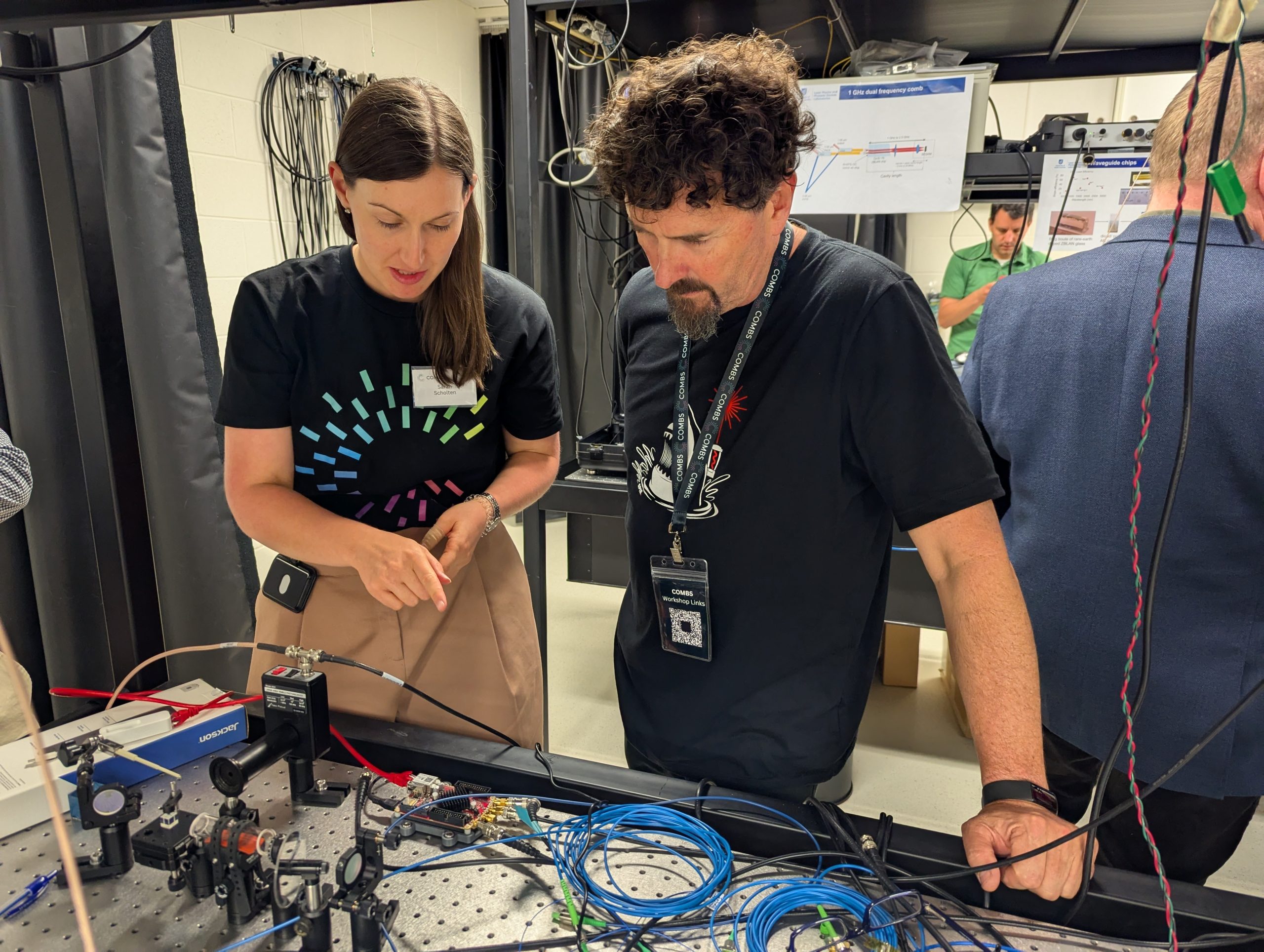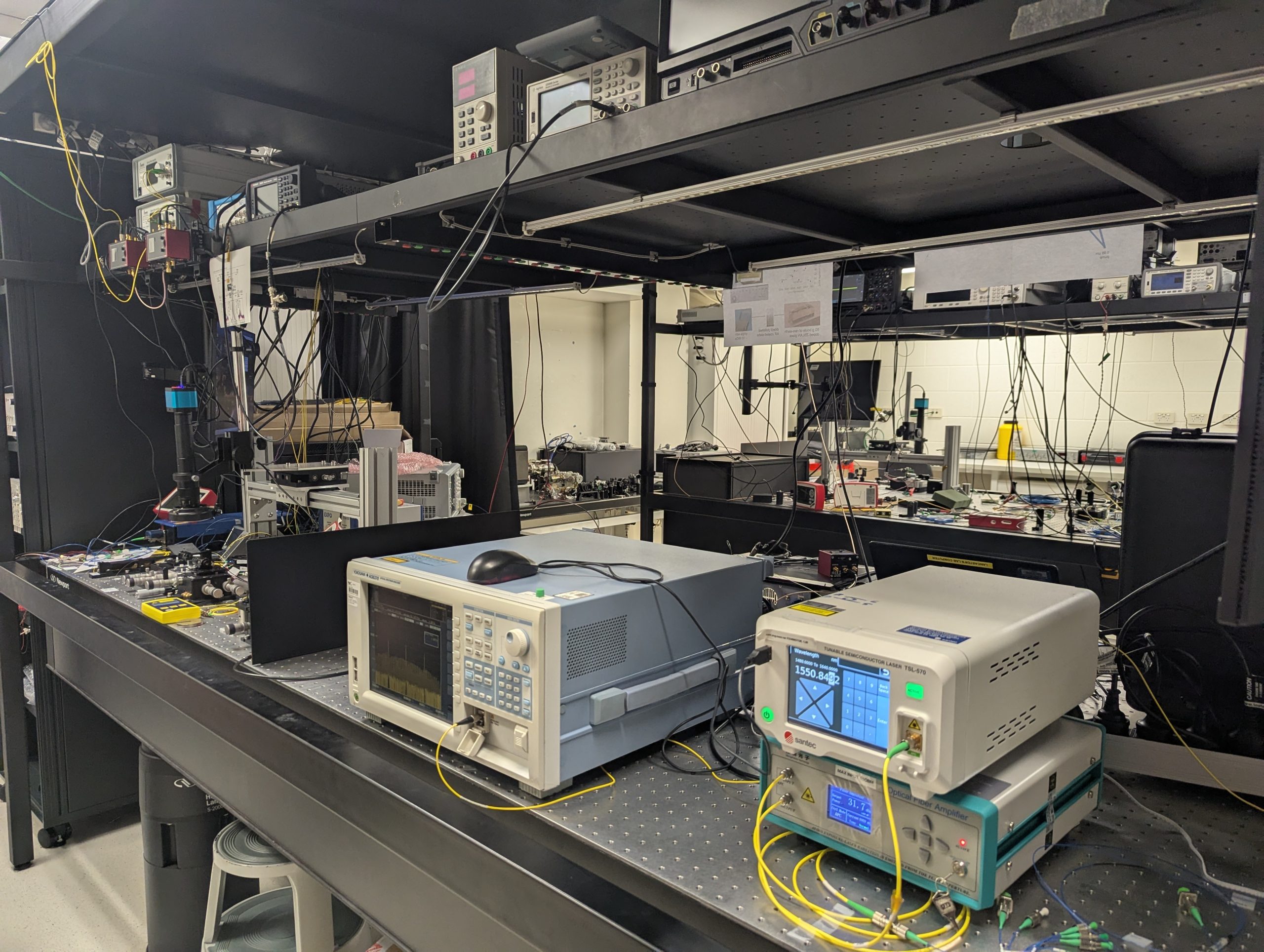Towards an Australian GPS solution: Precise timekeeping and measurement in a thumbnail-sized piece of glass
Atomic clocks power our GPS, helping us to navigate and track our deliveries. But what would happen if the USA-based GPS were switched off? At COMBS, we’re developing smaller, tougher atomic clocks for compact, cost-effective Australian satellites.
The challenge
Australia needs a small and nimble GPS solution, tailored to our needs
GPS powers navigation, finance and our internet, but relies on traditional electronic-based atomic clocks – precise timekeeping equipment – that are easily jammed, spoofed or disrupted. This presents a major vulnerability in contested and urban environments.
Next-generation optical atomic clocks – which instead operate at light-speed – offer greater precision and resilience.
To convert this ‘light-speed signal’ into an electronic signal, they require a ‘translation’ device called the frequency comb. But these are large, expensive, fragile and fibre-based, making them prone to breaking when operated outside of a laboratory.
Making frequency combs smaller and robust is key to scaling up these next-generation atomic clocks to enable a faster, more resilient GPS.

Sarah Scholten and David Lancaster at the Precision Management Group Labs at the University of Adelaide
Our response
Building a frequency comb tough enough to survive launch and beyond
To address the fragility of the fibre-based frequency combs, laser technology expert David Lancaster and atomic clock specialist Sarah Scholten collaborated on a more compact, stable design with less moving parts.
At the 2024 COMBS Annual Workshop, they outlined key requirements for the frequency comb to be deployed in the real-world or even in space: miniaturisation, stability, and ease of use.
David’s team then fabricated his laser-based frequency comb – inscribed in a thumbnail-sized block of glass – offering a more compact, manufacturable, and turnkey solution.
A crucial first step in testing its real-world resilience was transporting the frequency comb between laboratories in a suitcase, assessing its ability to withstand real-world conditions.
The results and current progress
A step towards a robust Australian GPS solution - rugged chip scale frequency combs
After arriving in Sarah’s laboratory*, Dave’s frequency comb turned on within a few minutes – showing just how robust and transportable it is. It then remained operational after extended use, which marked another key milestone.
The next challenge is to take David’s miniature lasers and integrate them into a complete optical frequency comb system on a chip the size of a fingernail.
RMIT’s photonic chip technology can help, and the COMBS Science and Technology Theme will spend the next 12 months working to combine these two technologies.
With continued refinement, these frequency combs could be mass-produced, enabling smaller, more robust atomic clocks – with the key goal of creating more precise and resilient GPS.
*Sarah’s Laboratory is a part of the Precision Measurement Group Labs at the University of Adelaide – thank you to our Chief Investigator Andre Luiten for letting us use them!

High precision measuring equipment in Sarah's lab at the University of Adelaide



